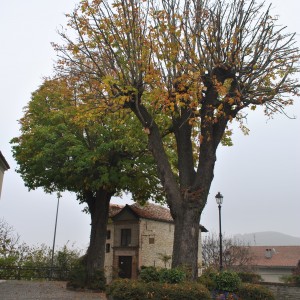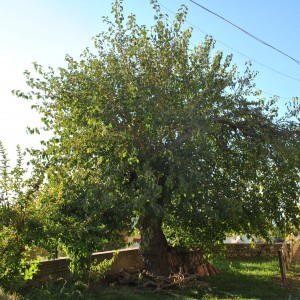Along the roads of wine

strade del vino
The Langhe, once a wild obscure impenetrable land, are extremely friendly today. Sceneries of incomparable beauty have a cheering effect on visitors and people’s hospitality has to be added to this appeal.
The unusual routes suggested below will enable you to marvel at little towns and picturesque vineyards.
The quiet and restful belvedere in Verduno, on top of the hill, is one of the most impressive and romantic places in the Langa.
The castle overlooking the picturesque piazza was built in the mid 18th century and bought by king Carlo Alberto in 1838. He converted it into one of the richest residences of the Savoy family. It was in the castle that the oenologist of the Savoy family, general Staglieno, created one of the first Barolo in history. Another pioneer in the production of Barolo, Comm. Giovan Battista Burlotto, bought it in 1910.
Overlooking the piazza there is another remarkable building, the Baroque church of San Michele Arcangelo which treasures a portrait of Sebastiano Valfrè, who was born in Verduno in 1629, and who served as an army chaplain at the Court of Vittorio Amedeo II. The grape variety “Pelaverga piccolo” found on these hills its ideal environment. Verduno Pelaverga wine is made by a handful of growers in Verduno who have been promoting it worldwide.
From Verduno driving to La Morra, which is one of the eleven towns that make up the area where Barolo is produced. Via Umberto is the ancient High Street where the workshops used to be located. It climbs steep to piazza Castello. The belvedere offers a superb view on the Langhe and the Alps. Under the visitor’s eyes broadens an awe-inspiring landscape dotted with quaint towns, castles and towers overlooking the surrounding vineyards.
From via Umberto go through the ancient market hall and take via XX Settembre. Stop at the noble chapel of Our Lady of Counsel and the portal featuring the Falletti family’s crest. In the cellars of this building, that currently belongs to the Cordero di Montezemolo, the first Barolo of La Morra was made.
Turn left into via Ospedale and walk along the medieval Casa Boffa (Boffa House) characterized by two beautiful gothic windows, and the sober façade of the Hospital (1829). At the end of the street is the 18th century San Sebastiano’s Confraternity Church.
Walk back to via Umberto, at the crossroads turn right into via Daziani and reach the Town Hall. Stop under the towering horse-chestnut tree and marvel at San Martino’s Baroque church (1639-1702), San Rocco’s Confraternity Church (1749) whose dome was frescoed by Pietro Paolo Operti, and the Town Hall, whose façade dates back to 1765.
Not far from here there is the Cantina Comunale, where excellent wines of La Morra can be tasted and purchased.
In the middle of the belvedere you will find the bronze monument to the Vignaiolo d’Italia, i.e. the Italian vine dresser. The ancient castle was knocked down but part of its bricks and stones were used to build the bell tower in 1710.
In medieval times La Morra was surrounded by high walls that were razed to the ground in the late 18th, early 19th century. However, it is still possible walking along their ancient lay-out by walking down via Garibaldi.
From La Morra if you take the main road you will get to Novello. From there you will enjoy a wonderful view on the Lower and Upper Langa, Serralunga and Grinzane’s castle and, of course, the vineyards. In Vergne a handful of local artists painted a series of murals following the theme “Aspects of rural life”.
Driving along the road to Novello, the castle “della Volta” suddenly rears into view. Do not miss San Pietro de Vignoleis’s country chapel (vignoleis meaning vineyards) called by the locals San Pietro of the Violets on the left hand side of the road. Take a while to enjoy the picturesque vineyards of Barolo.
Novello is a nice little town perched on a hilltop. At the entrance of the town a medieval tower features the ancient town door. When San Michele Arcangelo’s church (1761-1783) was built to the project by Francesco Gallo, well known architect from Mondovì, the medieval tower was converted into a bell tower.
Next to the church stands the beautiful Baroque San Giovanni Battista’s Confraternity church.
Going out of the town there is the castle overlooking the valley. There is no evidence left of the ancient medieval castle. A Neo-Gothic building was erected in its place in the late 19th century project by Gian Battista Schellino, architect from Dogliani. It has been housing a restaurant and a hotel since 1967.
From Novello drive to Monchiero. The town lays down in the valley but it was actually founded on the hilltop, as its name testifies (Mons Clarus). At the beginning of the 11th century a group of families settled there, building houses around the castle in order to be safe in case of attacks. However, in 1257 the castle laid in a state of decay and was knocked down.
Well worth a visit is the charming borough of Monchiero Alto (Upper Monchiero) from where you will enjoy enchanting sceneries, the Sanctuary of the Madonna del Rosario and the imposing building with an impressive portico overlooking the road to Dogliani.
Well worth a visit is the house of a well-known local painter, Eso Peluzzi. The building features a permanent collection of his paintings.
From Monchiero you can get to Dogliani, which is the last stop of our journey.
The surrounding hills are covered with vineyards and fields following a tidy pattern. Here, the protagonist is Dolcetto di Dogliani.
The town is divided into two parts: an upper part, called Castello (Castle), and a lower one, Borgo (Borough). Both feature an important church: respectively, San Lorenzo’s church which dates back to the 14th century, and SS. Quirico and Paolo’s church that boasts an impressive blue dome and was built in the late 19th century to the project by G. B. Schellino (1818-1905).
The medieval town is still recognizable because of the 14th century doors, Porta Soprana (Upper Door) and Porta Sottana (Lower Door) in Dogliani Borgo. In Dogliani Castello are Porta Gabetti (Gabetti Door) and the Torrione (Keep) of the Perno di Caldera’s palace (the ancient castle).
Next to the medieval Torrione and the Civic Tower with clock you will find the belvedere. Enjoy the breathtaking sceneries and the Ritiro della Sacra Famiglia (1883), one of Schellino’s peculiar works of art.
Schellino’s work brought substantial changes to the town in the 19th century. He designed the above-mentioned SS. Quirico and Paolo’s church and the Ritiro della Sacra Famiglia, the battlement of the Civic Tower (1862), the imposing entrance of the cemetery (1867), the Torre dei Cessi (1864), the Sanctuary of Our Lady of Graces (1874) and the Rosary chapels (1872), as well as the hospital (1888).
Well worth a visit is the Civic Library, that was built thanks to the Einaudi family’s contribution and dedicated to the President Luigi Einaudi, who was born in Dogliani. The building overlooks the river and was projected by the architect Bruno Zevi.
Do not miss the Bottega del Vino located in the picturesque cellars of a 16th century Carmelite Convent. The Bottega was founded to promote Dolcetto di Dogliani.






